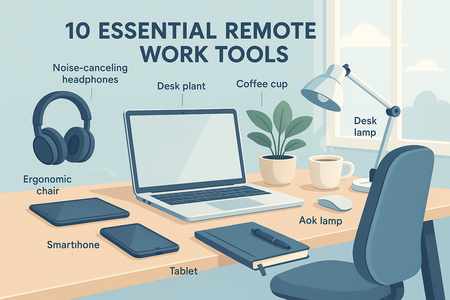7 AI Automations That Save You 40+ Hours/Month (And Grow Sales While You Sleep)
According to McKinsey, AI automation can cut operational costs by up to 30% while increasing productivity by over 50%. For eCommerce brands, this isn't a vague promise—it’s a tactical edge. If you're running a DTC brand or scaling a digital business, automating intelligently means you work less, grow faster, and never miss a sale.
But most founders don’t know which automations actually move the needle—or how to implement them without a dev team.
In this guide, we break down 7 proven AI automations that regularly save businesses 40+ hours per month and compound growth with little manual input.
Let’s get practical.
1. Smart Email Sequences That Adapt to Behavior
One-size-fits-all emails are dead. Modern email tools powered by AI (like Klaviyo’s predictive AI or Mailmodo’s adaptive flows) now use customer behavior to automatically trigger product suggestions, educational nudges, and abandoned cart recovery emails—all personalized in real time.
📌 Stat to know: Behaviorally triggered emails generate 3x more revenue than batch-and-blast campaigns (Source: Campaign Monitor).
These automations run 24/7, sending messages when your customer is most likely to engage—often recovering sales you didn’t know you lost.
Internal link idea: Explore Ukiyo’s Email Automation Services
2. AI Chatbots That Handle 60%+ of Customer Support
The average founder spends over 10 hours a week answering FAQs, refund requests, and shipping questions. AI chatbots like Gorgias, Tidio, and Intercom's Fin can handle 60% or more of those requests with no human intervention.
These bots don’t just offer canned responses. They learn from your knowledge base, track order status in real time, and even upsell intelligently within chats.
According to Tidio’s 2024 report, 62% of consumers prefer using a chatbot over waiting for a human rep.
3. Automated Social Content Distribution
If you’re manually posting to 5+ channels, you’re wasting hours. AI tools like Buffer’s AI assistant or Missinglettr repurpose your blogs, UGC, or tweets into optimized Instagram posts, LinkedIn carousels, or even TikTok captions.
Set rules once—like “Post 3x/week with trending hashtags on LinkedIn”—and the system handles the rest, often outperforming manual scheduling with better timing and reach insights.
Pro tip: Sync this with your Content Activation strategy for deeper engagement.
4. Predictive Inventory Management
For eCommerce founders, inventory guesswork can be brutal. AI-driven platforms like Cogsy or Netstock use predictive algorithms to automate reordering, detect demand spikes, and avoid overstocking—based on both historical and real-time sales trends.
This eliminates the need for constant spreadsheet wrangling and prevents lost revenue due to stockouts.
A study by Deloitte found that predictive supply chain tools can reduce inventory costs by 20% or more.
5. AI-Powered A/B Testing (That Learns While You Sleep)
Tools like Intellimize or Mutiny use machine learning to constantly test headlines, CTAs, and product layouts in real time. Unlike traditional A/B testing, there’s no need to wait for “statistical significance.” These platforms adjust live experiences automatically based on user behavior.
Think of it as 100 A/B tests running quietly in the background—without you having to lift a finger.
This means your landing page can evolve continuously, giving each visitor the version most likely to convert.
6. Lead Scoring That Predicts Purchase Intent
CRMs like HubSpot and ActiveCampaign use AI to assign real-time lead scores based on actions like email opens, site visits, and purchase history. With this, you can prioritize your best leads—or trigger exclusive offers to warm contacts without manual filtering.
💡 Why it matters: This turns your sales process from reactive to proactive. Your pipeline becomes smarter, not just bigger.
According to Salesforce's 2024 report, companies using predictive lead scoring are 2.9x more likely to exceed sales goals.
7. Dynamic Pricing and Personalized Offers
Ecommerce giants like Amazon don’t just suggest products—they alter prices in real time. With tools like Prisync or BlackCurve, even small brands can do this. AI dynamically adjusts pricing based on demand, stock levels, or competitor behavior.
Pair this with personalized email flows, and you can offer “10% off just for you” incentives right when the buyer is about to churn or bounce.
These systems constantly test what pricing drives the most conversions per customer segment—without you touching a dashboard.
Takeaway: Set It, Don’t Forget It—Just Refine It
AI automation isn’t about replacing human creativity. It’s about removing the manual grind that keeps your team from scaling.
You don’t need to implement all seven workflows at once. Start with one or two that align with your current bottlenecks, test results weekly, and stack more over time.
The smartest founders in 2025 aren’t hustling more—they’re automating smarter.
Want Help Implementing These?
If any of these automations sound like the solution you’ve been looking for, our team at UkiyoProd.com specializes in building custom AI systems for modern brands—without bloated retainers or code confusion. From chatbot setup to dynamic emails, we make it simple to scale without burnout.






0 comments